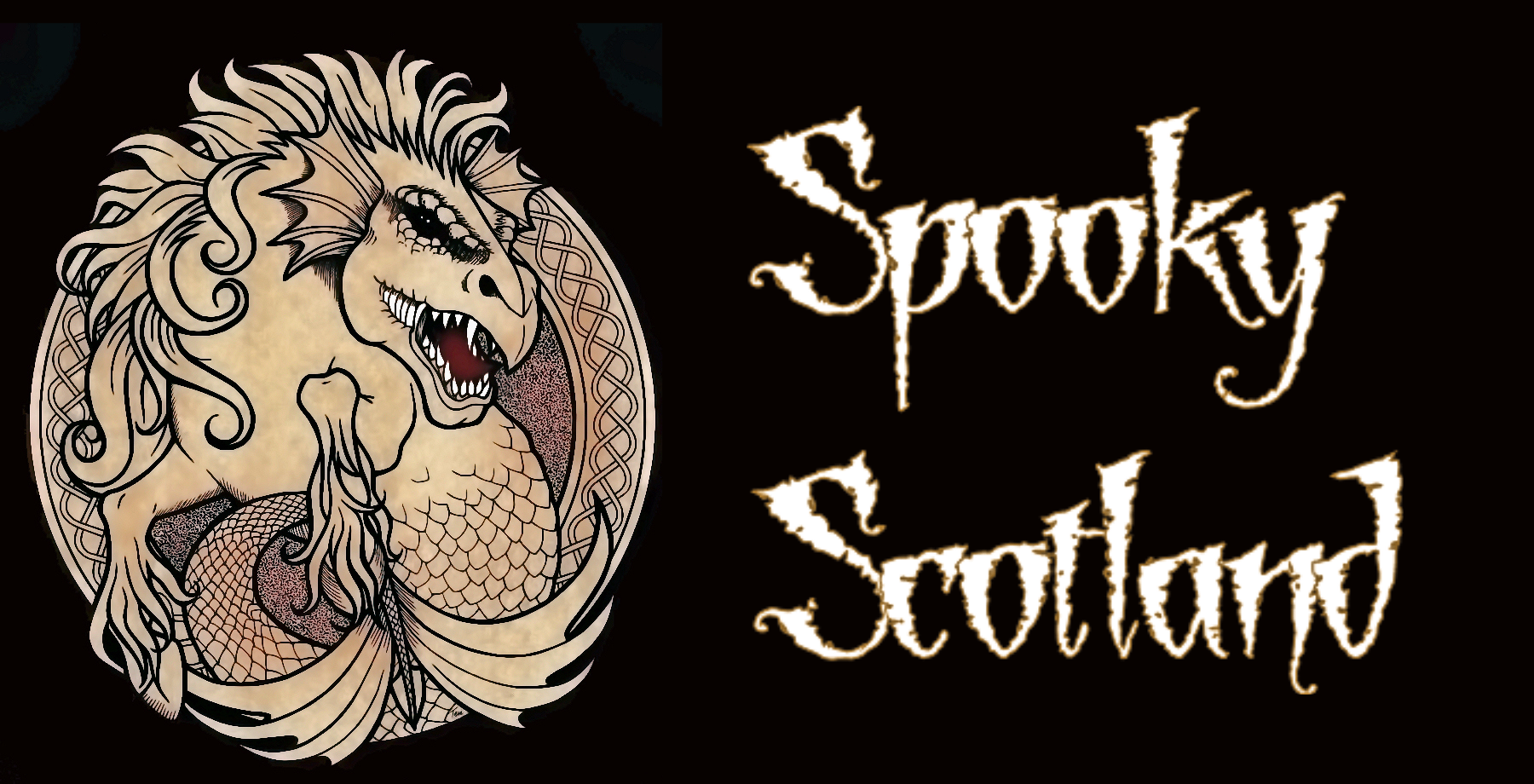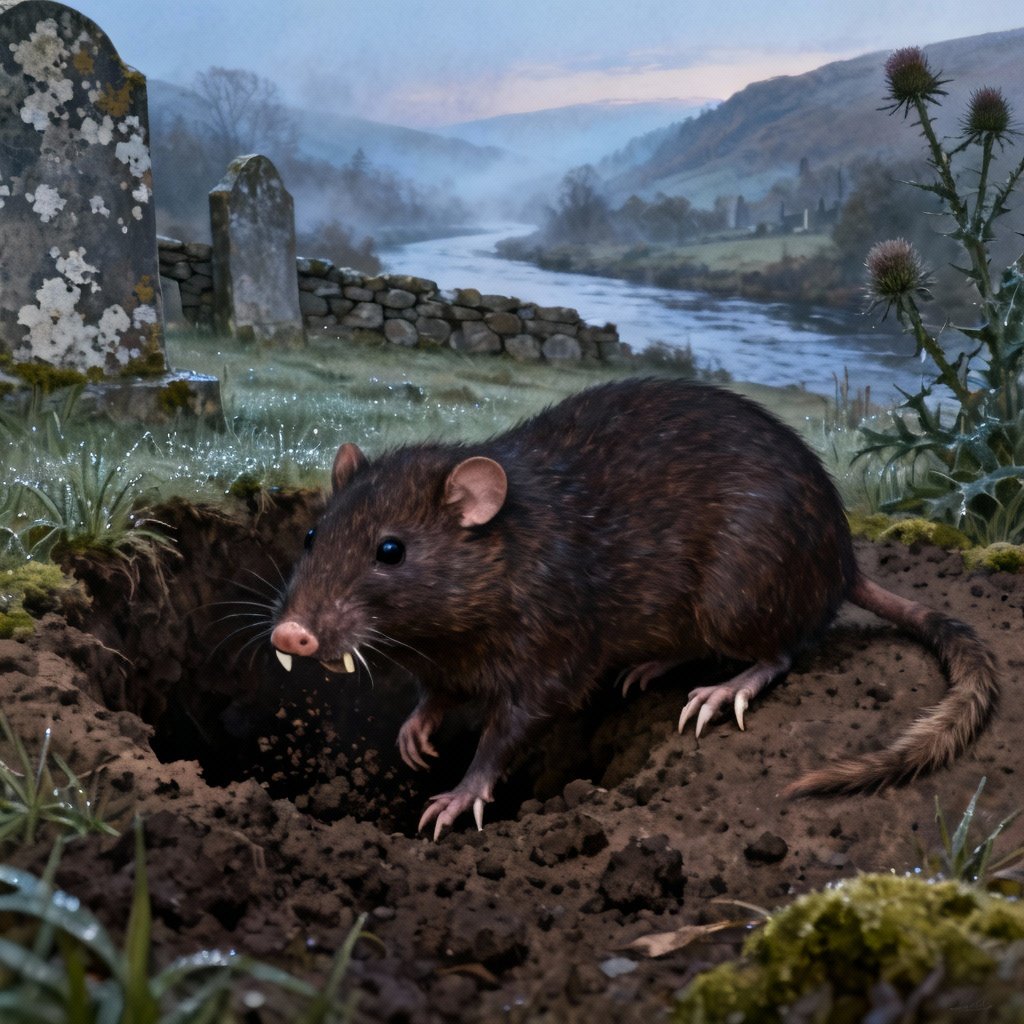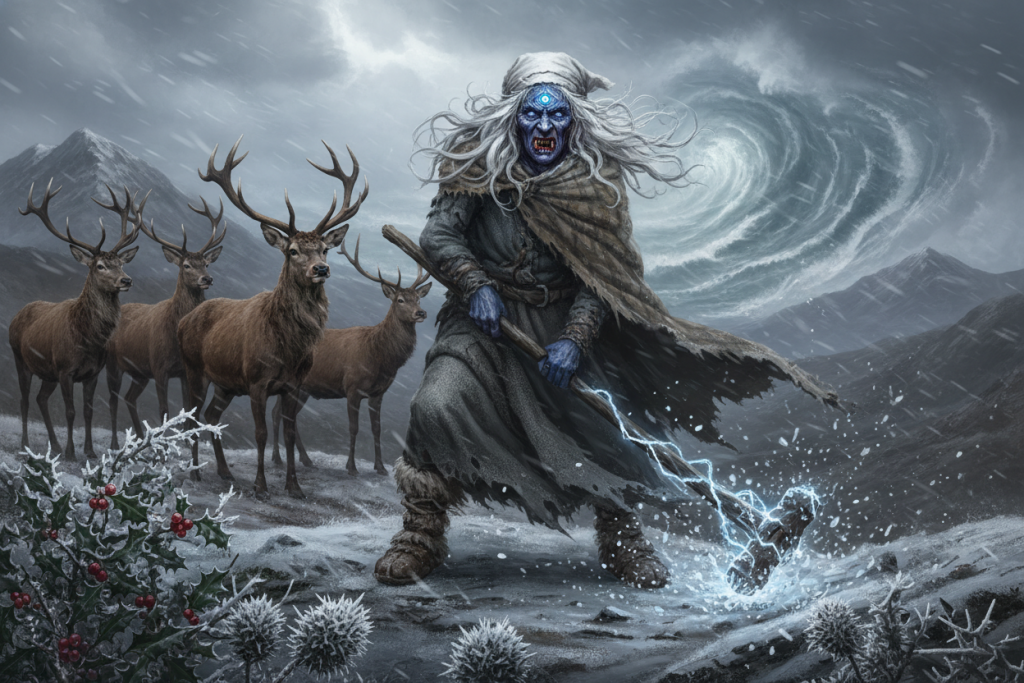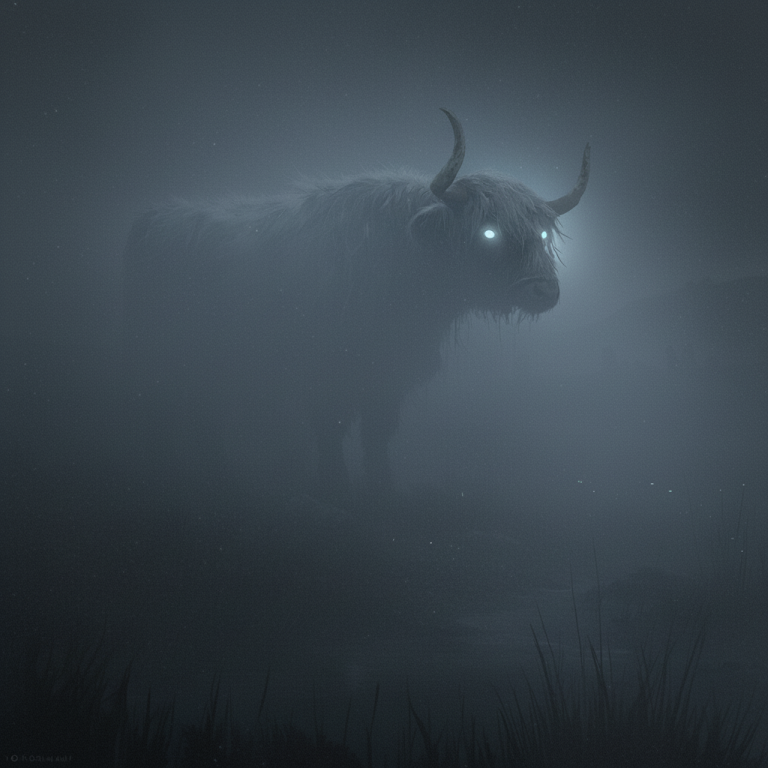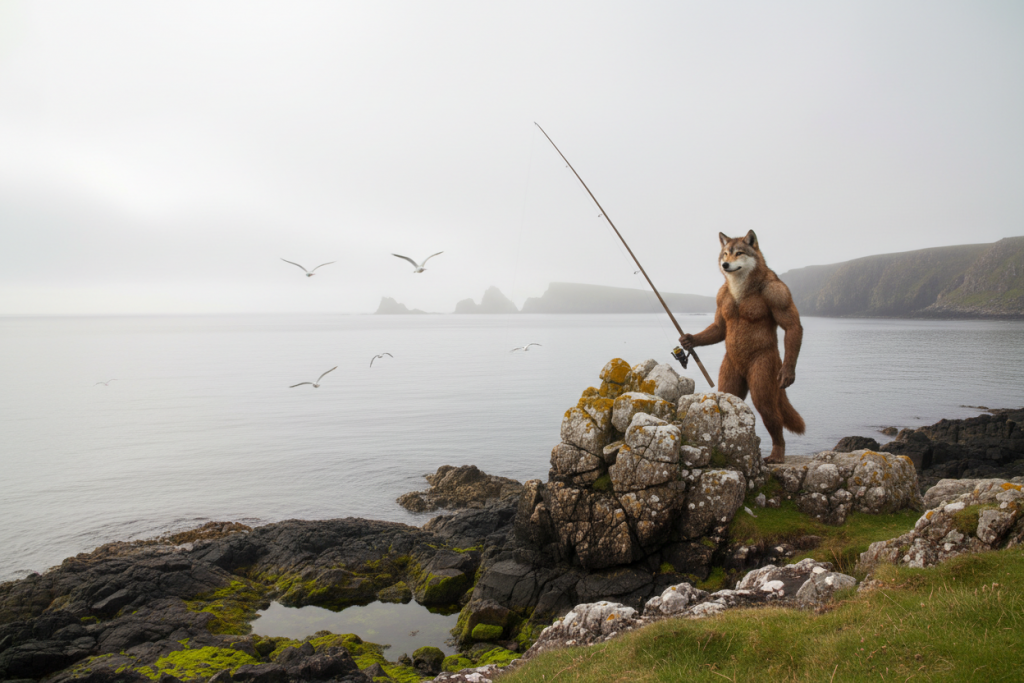Name pronunciation:
“Earth Hound” (urrth hound). “Yird” rhymes with “heard.”
General Information:
The Earth Hound is a cryptid from north-east Scotland. It is best known as a burrowing animal said to live in graveyards and eat corpses. While the idea sounds ancient, the written tradition is relatively modern. Recorded mentions begin in the late 19th century and cluster around the Aberdeenshire–Banffshire border, especially near the River Deveron and the Walla Kirk graveyard in the parish of Glass. Over time, the Earth Hound became part of local lore, with people repeating sightings and swapping details. Yet, there is no confirmed specimen. Therefore, most researchers think it is a case of misidentification, most likely a water vole, mixed with graveyard superstition.
Appearance:
Reports vary, but the core description is consistent:
- Size: usually “about the size of a rat,” sometimes “about the size of a ferret,” and in 1990 “atween a rat and a rabbit.”
- Build: “something between a rat and a weasel,” or “half-rat half-mole.”
- Head: long; compared to a guinea pig; pig-like nostrils; sometimes described as dog-like.
- Teeth: noticeable white “tusks” (likely the prominent incisors of a rodent).
- Feet: “like a mole,” suggesting digging ability.
- Tail: shorter than a rat’s, “about half as long,” though one account says “very long.”
- Colour: dark, like a brown or black rat.
These contradictions are normal in oral tradition. However, several details do align with the Eurasian water vole.
Habitat:
Nearly all accounts place the Earth Hound in graveyards. However, the surrounding landscape matters too. The focus is the Deveron river system and its tributaries, the Bogie and the Isla. These watercourses run close to the graveyards mentioned in the stories. Water voles prefer riverbanks and wet ground, which would explain sightings near kirkyards set by rivers.
Behaviour:
According to tradition, the Earth Hound burrows in graveyards. People say it digs into graves, and sometimes into coffins, to feed on corpses. In addition, farmers have blamed heaps of upturned soil on their land on Earth Hounds. However, these claims are unverified. They fit wider 19th-century fears about new burial grounds rather than solid animal behaviour.
Shape-shifting Ability:
There is no shape-shifting in the Earth Hound tradition. It is presented as a flesh-and-blood animal, not a supernatural shapeshifter.
Variant:
Local names vary. You will see Earth Hound, Yird Pig, Yird Swine, and “earth hun.” Otherwise, there are no clear regional variants of the creature itself.
Location in Scotland:
- Core region: Aberdeenshire–Banffshire border.
- Key places: Parish of Glass (Walla Kirk/St Walloch’s graveyard), Keith, Wartle/Mastrick (rural), Strathbogie, and areas near the River Deveron, plus its tributaries the Bogie and the Isla.
- Outlier mention: An east-coast Aberdeenshire graveyard.
Stories/ Sightings or Experiences:
The Ploughman’s Find (~1867: A field near a churchyard by the River Deveron)
Account: In 1917, a gardener named Archibald told A. Smith (of Wartle) about his father’s encounter around 50 years earlier. While ploughing, his father uncovered an Earth Hound in its nest. He tried to kill it with a kick, but it bit through his boot leather. He then killed it with the plough’s swingle-tree and took the carcass home. Neighbours came to see it. Later descriptions from Archibald said the animal was between a rat and a weasel, ferret-sized, with a head like a dog, and a short tail. This is the most detailed and most cited story, though no specimen survives.
The Second Ploughed-Up Beast (1915: Farmland in Aberdeenshire)
The day after speaking with Archibald, A. Smith noted another report of a ploughed-up Earth Hound killed in 1915, possibly by a man named James McIntosh. However, this may be a muddled retelling of the ~1867 story. Even so, it shows the tale was active in local memory by the 1910s.
The Kirkyard Lurker (1891: A Deveron-side kirkyard, Strathbogie area)
George W. Anderson wrote that people said a “hideous ghoul,” the “erth-hun,” feasted on the dead and crunched coffins. This is a Gothic flourish, yet it helped cement the Earth Hound’s image as a graveyard corpse-eater. It also shows how folklore can lean into fear and drama, especially around death.
“Really Rats” (1950 People’s Journal report)
A short note dismissed Earth Hounds as “really rats” found in graveyards, locally called yird pigs or earth huns. This down-to-earth explanation rejected the mystery and implied a simple misidentification.
Still Spoken Of (1990: Banffshire, around Keith and the Walla Kirk at Glass)
Ethnologist Professor Alexander (Sandy) Fenton visited the area and found the Earth Hound still discussed. He was shown a churchyard where it was supposed to live. However, he found no trace of it. Even so, the belief remained part of local talk, which shows how such stories persist long after the supposed events.
Purpose of the myth or Legend:
The Earth Hound serves as a way to explain disturbed soil, animal burrows, and general unease in graveyards. During the 19th century, many parishes built new churches and opened new burial grounds. As a result, people felt anxious about the dead and the dignity of burial. Therefore, stories about graveyard-dwelling animals thrived. The Earth Hound also offered a local identity marker: a creature “from here” that people could discuss, doubt, and pass on.
From a natural history angle, the Earth Hound likely reflects misidentified wildlife. The Eurasian water vole fits many details: dark fur, blunt head, shorter tail, strong incisors, and a preference for riverine habitats common near kirkyards. Still, the corpse-eating claim likely grew from fear and hearsay rather than observed behaviour.
